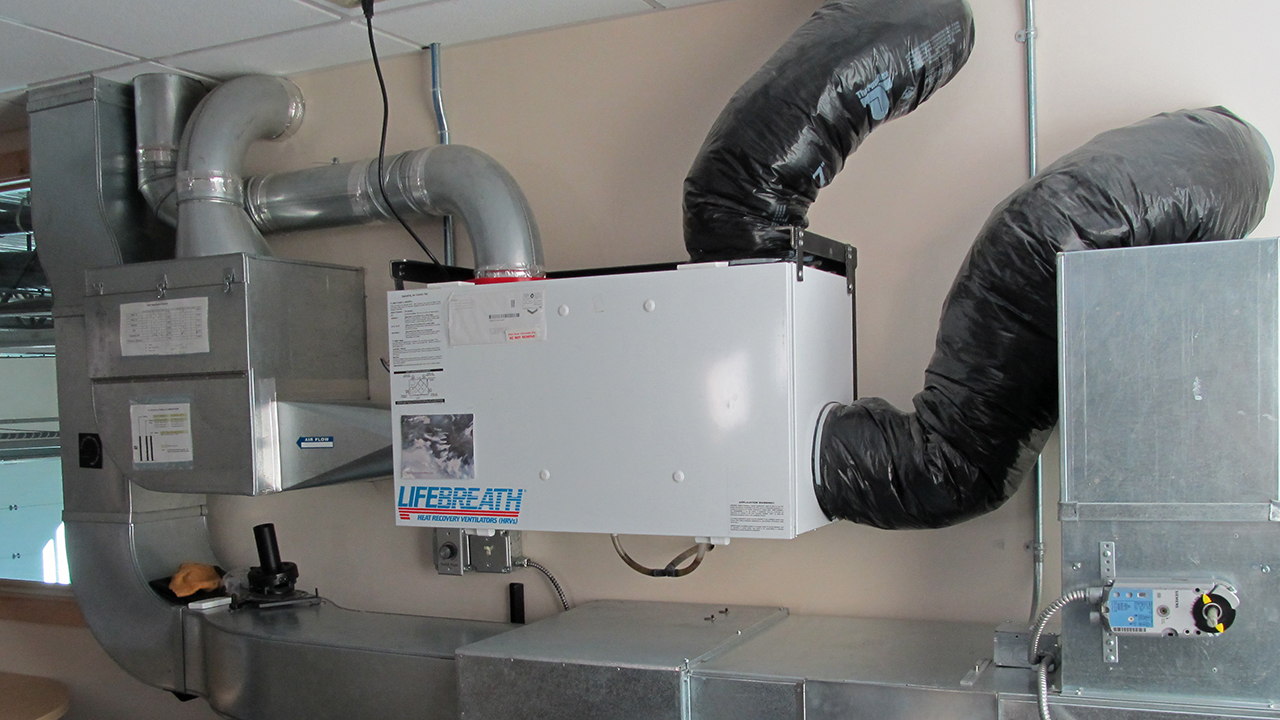Exploring the Benefits of Heat Recovery Ventilation for Power Performance in Houses
Heat Recovery Ventilation (HRV) systems supply property owners a functional strategy to enhancing power efficiency. By reclaiming warmth from outbound air, these systems can significantly decrease heating & cooling costs. Additionally, they give a constant supply of fresh air, enhancing indoor air high quality and convenience levels. As home owners think about sustainable alternatives, comprehending the subtleties of HRV systems ends up being increasingly crucial. What elements should one evaluate prior to making such an investment?
Recognizing Heat Recovery Ventilation Systems

Exactly How HRV Boosts Indoor Air Quality

Energy Financial Savings: The Monetary Advantages of HRV
Making best use of energy effectiveness, heat recovery ventilation (HRV) systems use significant economic advantages for home owners. By recouping and reusing warmth from exhaust air, HRVs significantly minimize cooling and heating prices. This technology can result in energy savings of up to 30%, depending on environment and usage patterns. Home owners usually notice lowered energy expenses soon after installment, making HRVs an economically smart financial investment gradually. Additionally, several regions supply motivations or discounts for energy-efficient upgrades, even more improving the financial allure. As power prices continue to climb, the cost-effectiveness of HRVs ends up being progressively clear. In general, the unification of HRV systems not only promotes energy performance however also adds to long-lasting financial cost savings for homes.
The Ecological Effect of Heat Recovery Ventilation
A considerable ecological benefit of heat recovery ventilation (HRV) systems lies in their ability to minimize overall energy usage. By redeeming heat from exhaust air and transferring it to incoming fresh air, HRV systems lessen the demand for energy-intensive home heating and cooling techniques. This decrease in power demand adds to decrease greenhouse gas exhausts, as much less fossil fuel is needed to preserve comfy indoor temperatures. In addition, HRV systems boost interior air quality by efficiently trading stale air with fresh outside air, lowering reliance on mechanical cooling systems that can hurt the environment. On the whole, the implementation of HRV systems sustains sustainable living methods and aligns with international efforts to deal with environment adjustment by promoting power performance in domestic settings.
Selecting the Right HRV System for Your Home
Just how can property owners guarantee they choose the best heat recovery ventilation (HRV) system for their requirements? First, they need to analyze their home's size and design, as these elements influence airflow requirements. Next off, reviewing the system's performance scores is vital, as higher ratings indicate far better efficiency and energy cost savings. Home owners need to likewise think about setup and maintenance prices, contrasting different brand names and like this designs for Get More Info value. In addition, it's vital to examine noise degrees, as some systems run more silently than others. Consulting with cooling and heating specialists can supply tailored referrals based upon details home conditions. Finally, examining individual testimonials and warranties can aid in making an informed choice, guaranteeing that the picked HRV system successfully enhances interior air quality and power performance.
Regularly Asked Questions

Just how Commonly Should I Tidy or Preserve My HRV System?
The regularity of cleaning or maintaining a warm recuperation air flow (HRV) system generally depends on use and environmental variables. Generally, it is advisable to do maintenance every 6 months to guarantee peak performance and air quality.

Can HRV Solutions Help In Reducing Moisture Levels Inside Your Home?
HRV systems can successfully lower indoor humidity levels by exchanging stale, damp air with fresh, drier air from outside. HRV Heat Recovery Ventilation. This process assists maintain a well balanced interior atmosphere, improving convenience and avoiding moisture-related problems
What Is the Life expectancy of a Normal HRV System?
The life expectancy of a typical heat recovery ventilation (HRV) system differs, normally lasting between 10 to 15 years. Normal upkeep can expand its efficiency and operational life, making certain peak efficiency throughout its use period.
Are There Any Noise Worries With HRV Equipments?
Noise interest in HRV systems can emerge, particularly from fan operation. Nevertheless, lots of modern-day systems are made to minimize sound levels, guaranteeing they run silently while preserving effectiveness, which attends to internet possible disruptions in living atmospheres.
Can I Set Up an HRV System Myself, or Do I Required an Expert?
The individual contemplated whether to mount the heat recovery ventilation (HRV) system directly or employ a specialist. Normally, while DIY installment is feasible, expertise warranties correct functionality and conformity with neighborhood building ordinance, improving system efficiency.